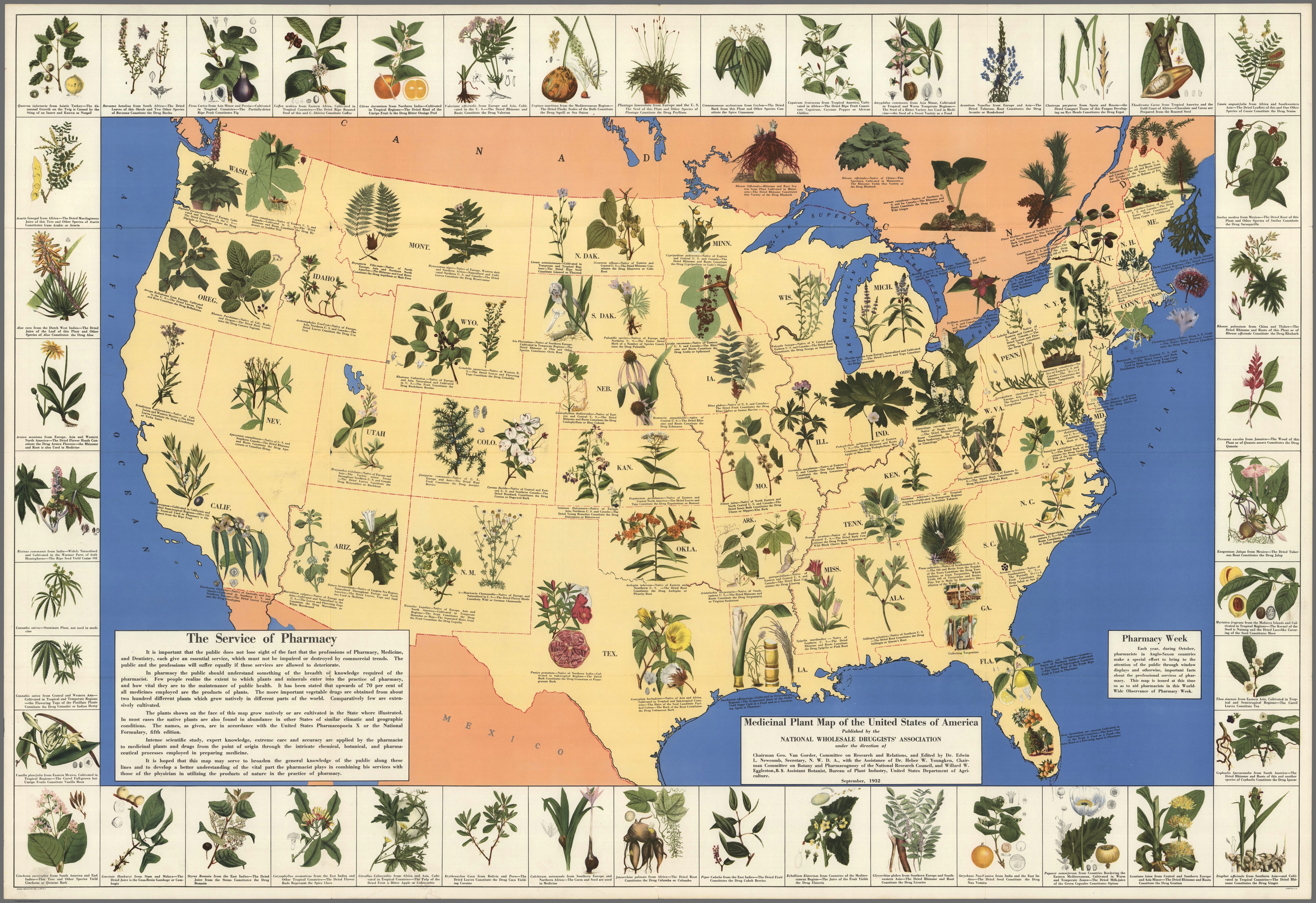A cyclist has a very lucky encounter with a family of skunks.
Enjoy!
https://youtu.be/cm_G82Vq5jY
Have you ever wanted to know what’s inside a Rattlesnake’s tail? Well, wonder no more.
Enjoy!
We CUT OPEN a Rattlesnake Rattle to see what’s inside!!
Rattlesnakes are dangerous reptiles that can have a lethal bite, luckily for us this one was not alive.
We learned a lot about Rattlesnakes in making this video and hope you enjoy it.
The differences between Wasps and Bees, and how to identify their nests.
Enjoy!
How can you tell the difference between a yellowjacket and a hornet? And how much cosmic XP do you need to evolve a wasp into a bee? Follow the insect that stung you, and discover the fascinating world of wasp nests and bee hives.

The map depicts different plant species that grew in each state of the United States in the 1930’s. It was printed by the National Wholesale Druggists’ Association, and serves as a fascinating reminder that, in our not-so-distant past, medicine was one hundred percent natural. Different herbs and plants were prescribed for different diseases, and people knew that healing takes time. When the 1938 Food, Drug & Cosmetic Act was passed, however, the landscape of medicine changed, and a federal regulation was put into place to govern the production of new medicines. The pharmaceutical industry completely took over, and our knowledge of herbal medicines was lost and shunned. As a result of these regulatory changes, medicine relying on synthetic chemistry took over, and pharmacists lost the ability to prepare medicine straight from the earth.
The Coconut Crab is like something from your nightmares!
IT’S HARD TO go wrong with a hermit crab as your child’s first pet. They’re low maintenance and kinda cute in their own way, plus they’re hypoallergenic, as PetSmart feels the need to point out. But use care when choosing your crab. Whatever you do, don’t pick up Birgus latro, which can grow to a leg span of 3 feet, climb out of your terrarium, and assault the family cat.
Birgus latro is more commonly known as the coconut crab, and it’s the largest terrestrial arthropod in the world (the largest overall being the Japanese spider crab — but that’s a story for another week). Also known as the robber crab due to its curious propensity for stealing silverware and pots and pans, it’s the 9-pound hermit crab PetSmart wouldn’t dare carry, no matter how conveniently hypoallergenic it is.
The coconut crab is endemic to a variety of islands in the Pacific and Indian oceans, though its populations are extremely threatened on some of these thanks to, you guessed it, human tomfoolery. It grows remarkably slowly, taking perhaps 120 years to reach full size, said ecologist Michelle Drew of the Max Planck Institute.
As an arthropod, the coconut crab wears its skeleton on the outside and must shed it as it grows, so once a year it crawls into the safety of a burrow and molts. It’s highly vulnerable once it steps out of this rigid shell, so to hasten the development of new armor it … consumes its old exoskeleton.
It is, in effect, recycling the materials, which are in short supply in its terrestrial environment. Coconut crabs that “are disturbed before they have consumed the entire shell often have soft exoskeletons until they have time to reaccumulate the necessary calcium and other minerals,” Drew said in an email to WIRED.
The crab can grow and molt every year like this for more a century, expanding and expanding like a dying star with claws until it threatens to infringe on the very laws of physics.
“In a water environment you get support from the water that allows you to move with a much heavier shell,” said Drew. “But on land, gravity will play a huge role on how you can move and how heavy you can get. [Coconut crabs] are probably at the limits of what is sustainable given gravity, the weight of the shell, and resources available to them in terms of food and water.”
Feeding this incredible growth is no small task, so the coconut crab eats anything it can get its claws on. It’ll go after fruit, vegetation, and carrion: dead birds and other coconut crabs and such. It has been observed hunting other crabs, and Drew has records of them ambushing young chickens as well as — don’t hate me for this — kittens, like a far less cuddly Alf of the tropics.